
250 E Street SW
Washington, D.C. 20525
202-606-5000/ 800-942-2677
Indirect Cost Guidance
Office of Audit and Debt Resolution (OADR)
February 2024

1
Contents
1.0
Background and Purpose ................................................................................................................... 2
2.0
Distinguishing Direct from Indirect Costs .......................................................................................... 3
3.0
Options for Calculating Indirect Costs (choose, A, B, or C) .............................................................. 3
4.0
Negotiating an Indirect Cost Rate ...................................................................................................... 5
5.0
Who is my Cognizant Agency for Indirect Costs? ............................................................................. 5
6.0
Steps to Submit Indirect Cost Rate Proposal to AmeriCorps ........................................................... 7
7.0
Requesting a Federally Negotiated Indirect Cost Rate Extension ................................................... 8
8.0
ICRP Submission, Review and Approval Process Summary ............................................................. 9
9.0
Key References to Trainings and Resources: ................................................................................. 10
Attachment 1. Indirect Cost Proposal Checklist for Non-profit and Commercial Organizations.......... 11
Attachment 2. Indirect Cost Rate Proposal Checklist for State Workforce Agencies ............................ 12
Attachment 3. Sample: Cost Policy Statement ......................................................................................... 13
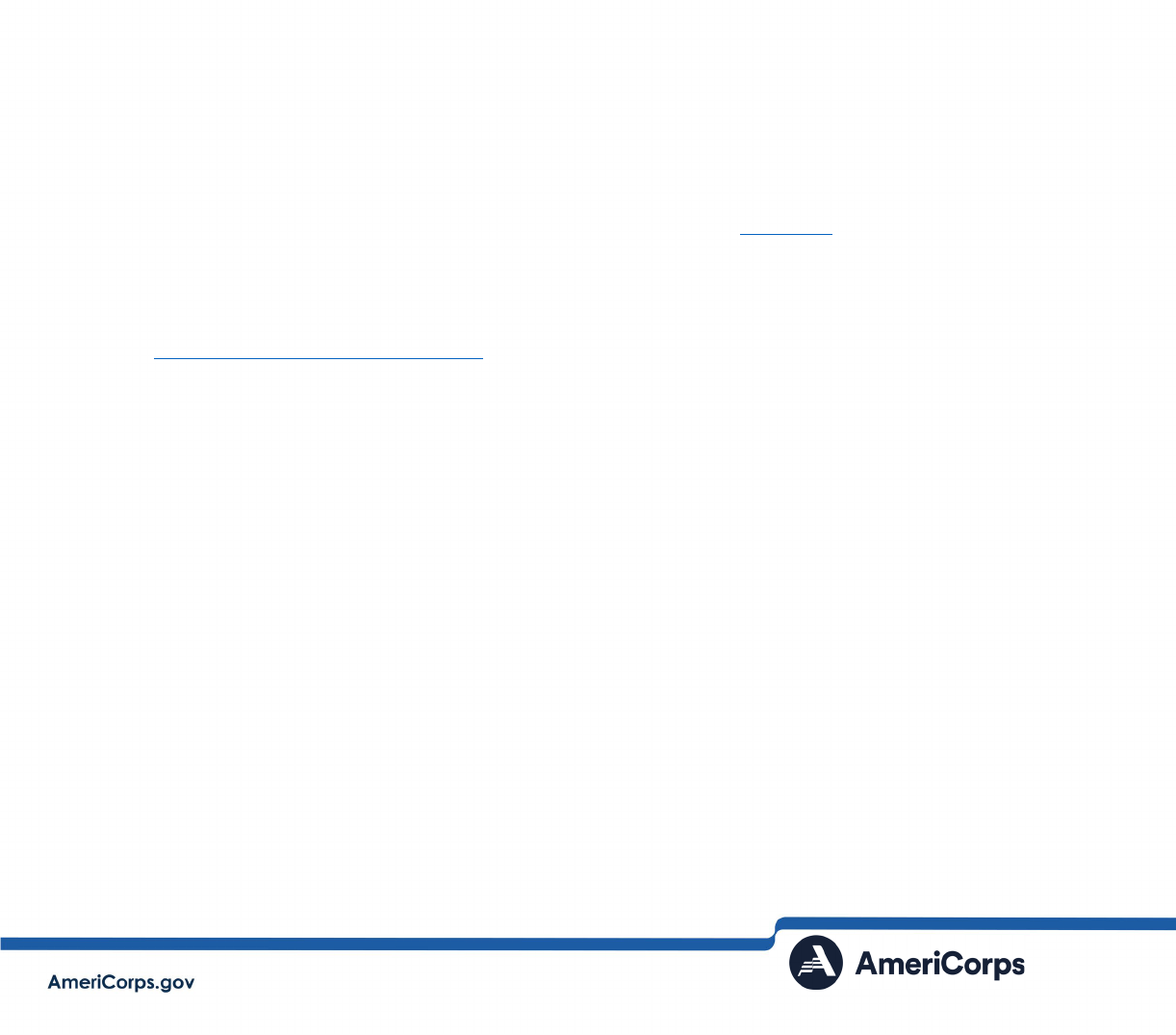
2
1.0
Background and Purpose
This guide is designed to provide AmeriCorps applicants and grantees with the
foundational knowledge necessary to effectively manage, and consistently allocate and
apply indirect costs associated with AmeriCorps awards. AmeriCorps Office of Inspector
General has identified a need for better controls and procedures on how to charge indirect
costs to Federal awards. This resource aims to foster transparency, efficiency and
accountability around indirect costs by identifying:
the different types of indirect cost rates
available to AmeriCorps applicants;
the conditions under which those costs can be claimed;
the steps involved in submitting an indirect cost rate proposal;
the process by which AmeriCorps negotiates and approves indirect cost rate
proposals.
The
guidance outlined in this document is rooted in Federal statutes, regulations, and other
applicable standards. Recognizing the complexity of those standards and the critical nature
of accurately determining and applying indirect cost rates, this guidance has been
prepared to serve as one-stop-shop to equip grantees with the relevant resources,
knowledge, and tools necessary to navigate the complexities of indirect costs, ensuring
consistency, and compliance with Federal regulations.
In addition to the information outlined in this resource, AmeriCorps applicants and
grantees are encouraged to visit our Grantees and Sponsors webpage for resources,
including eGrants instructions, grant terms and conditions, pre-award requirements,
financial reporting requirements, and training and technical assistance.
Any outstanding questions concerning indirect cost rates can be directed to
[email protected]. AmeriCorps’ Office of Audit and Debt Resolution
(OADR), which is responsible in administering the negotiant and approval of indirect cost
rate proposals and extensions, actively manages that inbox.
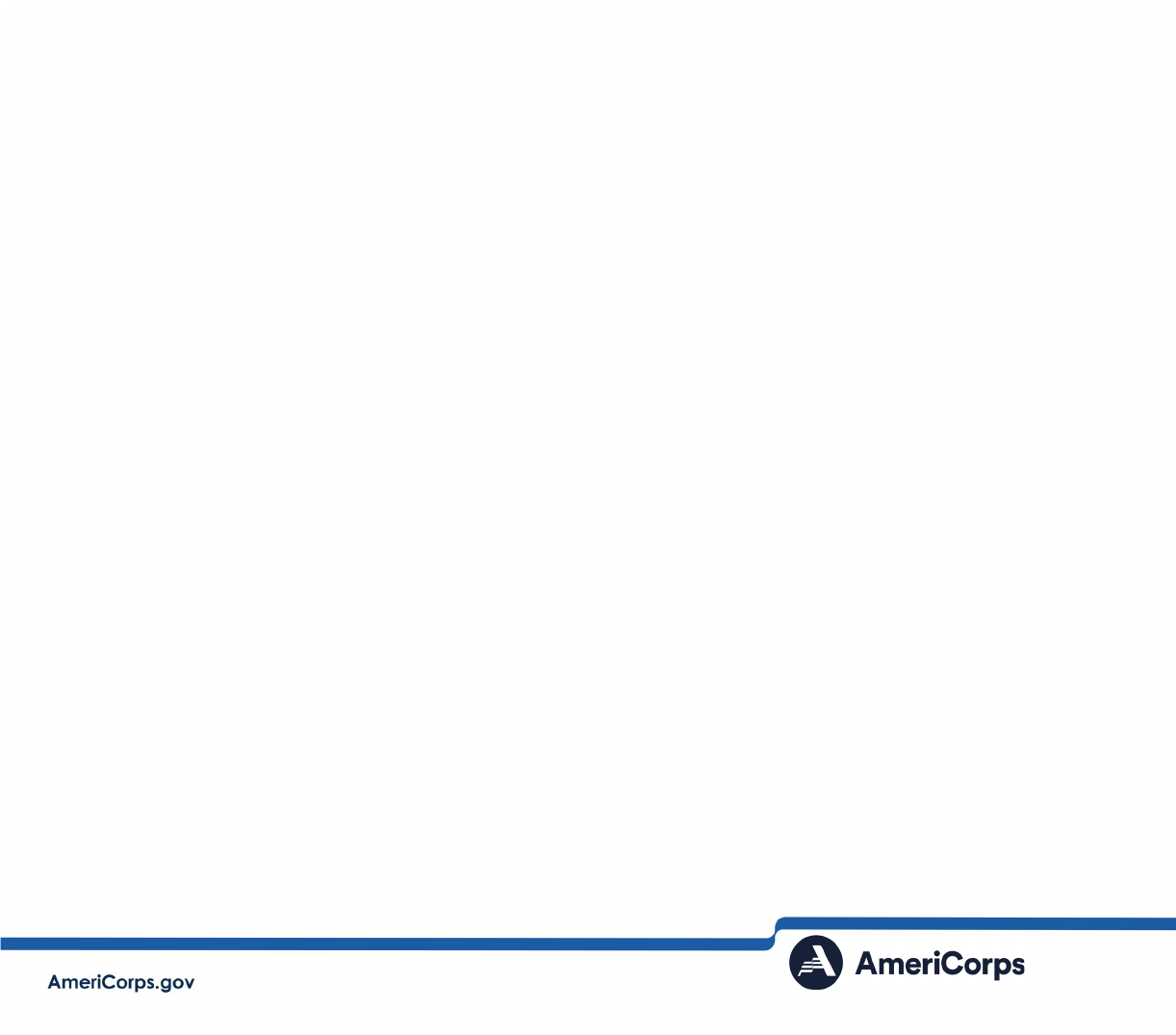
3
2.0
Distinguishing Direct from Indirect Costs
According to 2 CFR 200.413, Direct Costs are “costs that can be identified specifically with a
particular final cost objective, such as a federal award, or other internally or externally funded
activity, or that can be directly assigned to such activities relatively easily with a high degree
of accuracy.” In other words, direct costs are costs that are readily allocable to a particular
project. They can include costs such as program staff salaries, volunteer stipends, member
living allowances, uniforms, and member gear. They are directly allocated to the project and
tracked.
Indirect costs are the hidden costs that support a project. They include general expenses for
the organization’s administration that are incurred for common or joint objectives, and not
readily identifiable to a specific project or cost objective. Typically, indirect costs are the
expenses of doing business and include costs such as administrative salaries and wages;
accounting and auditing services; rent, leases, and mortgages; basic office supplies and
equipment; building maintenance and utilities; and Directors and Officers Insurance. The
Uniform Guidance classifies indirect costs into two broad categories: The first category,
“Facilities,” is defined as depreciation on buildings, equipment, and capital improvement;
interest on debt associated with certain buildings, equipment, and capital improvements;
and operations and maintenance expenses. The second category, which is more applicable
for AmeriCorps grants and often used interchangeably with indirect costs in eGrants, is
“Administration.” These costs are defined as general administration and general expenses
such as the director's office, accounting, personnel, and all other types of expenditures not
listed specifically under one of the subcategories of Facilities. However, the Uniform
Guidance notes that it is not possible to specify the types of cost which may be classified as
indirect (Facilities and Administration) in all situations. Identification with a Federal award
rather than the nature of the goods and services involved is the determining factor in
distinguishing indirect (Facilities and Administration) costs of Federal awards.
It is imperative to note that any item of cost incurred, either as a direct or an indirect (F&A)
cost, be treated consistently across similar circumstances, to avoid possible double charging
of Federal awards. A cost may not be assigned to a federal award as a direct cost if any other
cost incurred for the same purpose in like circumstances has been allocated to the Federal
award as an indirect cost.
3.0
Options for Calculating Indirect Costs (choose, A, B, or C)
Based on qualifying factors, applicants may either use a Federally approved indirect cost
rate or a 10 percent de minimis rate of modified total direct costs or may claim certain costs
directly. 2 CFR 200.4133 states that local governments, and Indian Tribes may use previously
approved indirect cost allocation plans. All methods must be applied consistently across all
federal awards. Applicants that have a federal negotiated indirect cost rate, or that will be
using the 10% de minimis rate, must enter that information in the Organization section in
eGrants. However, per statute and regardless of the option used, no more than five percent
of federal funds awarded by AmeriCorps may be used to recover indirect costs on
AmeriCorps State and National grants.
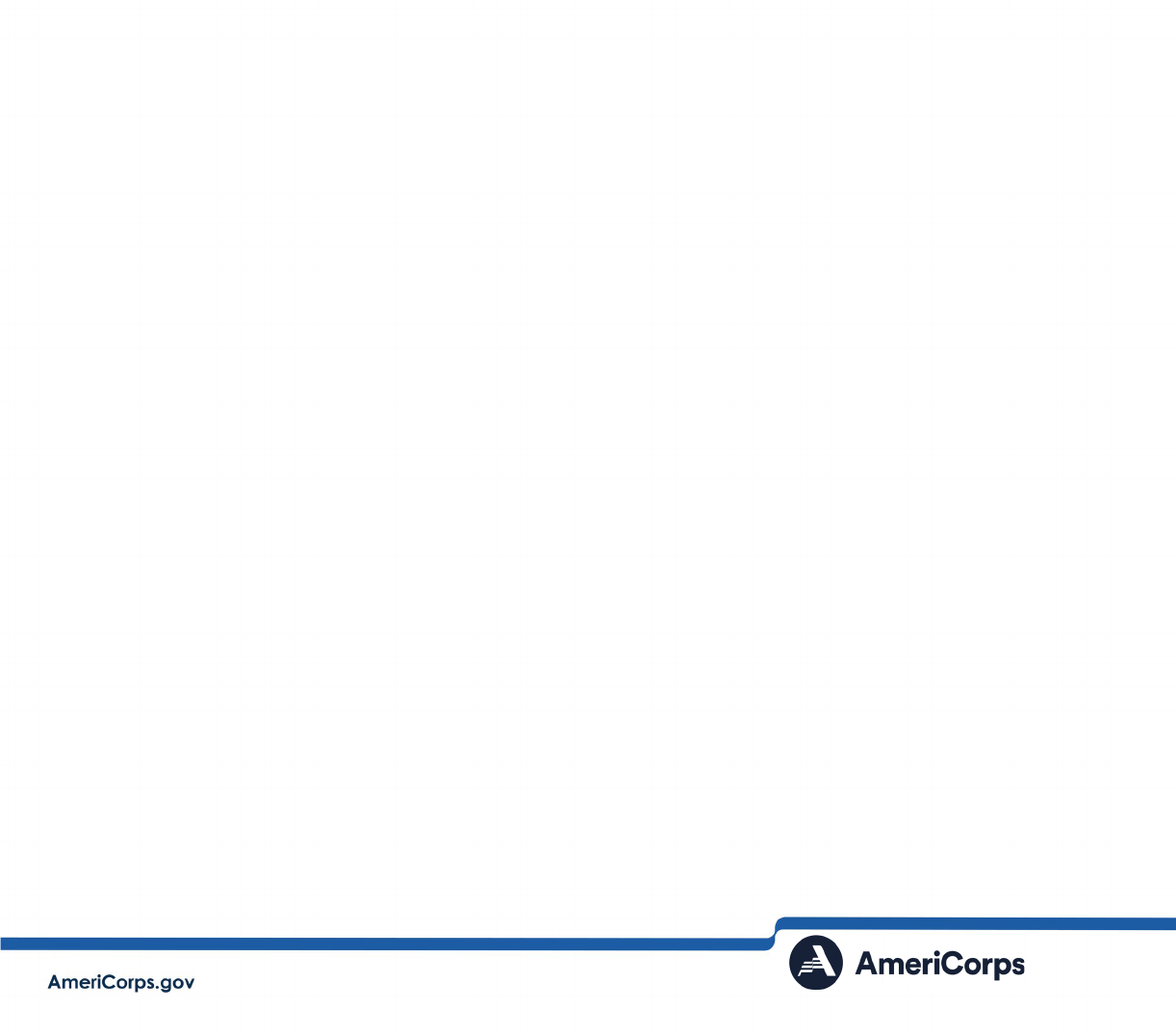
4
Applicants choose one of three methods to calculate allowable administrative costs – a
CNCS-fixed percentage rate method, a federally approved indirect cost rate method, or a
de minimis method. Regardless of the option chosen, the CNCS share of administrative
costs is limited to 5% of the total CNCS funds actually expended under this grant, per
section 121(d) of the National and Community Service Act of 1990, as amended and
AmeriCorps’ regulations at 45 CFR 2521.95 and 2540.110.
A. CNCS-Fixed Percentage Method Five/Ten Percent Fixed Administrative Costs Option
(Applicable ASN Applicants/Grantees Only):
The CNCS-fixed percentage rate method allows you to charge administrative costs up to a
cap without a federally approved indirect cost rate and without documentation supporting
the allocation. If you choose the CNCS-fixed percentage rate method (Section III.A. in
eGrants), you may charge, for administrative costs, a fixed 5% of the total of the CNCS funds
expended. To charge this fixed 5%, the grantee match for administrative costs may not
exceed 10% of all direct cost expenditures.
B. Federally Approved Indirect Cost Rate:
If you have a federally approved indirect cost rate, this method must be used, and the
rate will constitute documentation of your administrative costs, not to exceed the 5%
maximum federal share payable by AmeriCorps. Specify the Cost Type for which your
organization has current documentation on file, i.e., Provisional, Predetermined, Fixed, or
Final indirect cost (IDC) rate. Supply your approved IDC rate (percentage) and the base
upon which this rate is calculated (direct salaries, salaries, and fringe benefits, etc.).
AmeriCorps does not restrict the overall indirect cost rate claimed. It is at your discretion
whether or not to claim your entire IDC rate to calculate administrative costs. If you choose
to claim a lower rate, please include this rate in the Rate Claimed field.
C. De Minimis Rate of 10% of Modified Total Direct Costs:
Organizations who do not currently have a federally negotiated indirect cost rate (except
for those non-federal entities described in Appendix VII to Part 200—States and Local
Government and Indian Tribe Indirect Cost Proposals, paragraph (d)(1)(B)) and who receive
less than $35 million in direct federal funding may indefinitely use a de minimis rate of 10%
of modified total direct costs (MTDC). Additional information regarding what is included in
MTDC, and use of this option can be found at 2 CFR 200.414(f) and 200.68. If you elect to
use this option, you must use it consistently across all federal awards.
Per 45 CFR 75.2,
Modified Total Direct Cost
(MTDC) means all direct salaries and wages,
applicable fringe benefits, materials and supplies, services, travel, and up to the first
$25,000 of each subaward (regardless of the period of performance of the subawards
under the award). MTDC excludes equipment, capital expenditures, charges for patient
care, rental costs, tuition remission, scholarships and fellowships, participant support costs
and the portion of each subaward in excess of $25,000. Other items may only be excluded
when necessary to avoid a serious inequity in the distribution of indirect costs, and with the
approval of the cognizant agency for indirect costs.

5
Options for Calculating Indirect Costs Summary Matrix:
A: B: C:
CNCS-Fixed Federally Approved De Minimis Rate
Percentage
Indirect Cost Rate
(5/10% Fixed
Method)
Eligibility Rules
AmeriCorps State Organization has Organization does
and National only, a negotiated indirect not currently have a
per 45 CFR §2521.95
cost rate agreement NICRA and receives
(NICRA) less than $35M in direct
from cognizant
federal funding
.
federal agency
.
Must use for all federal
Must use this rate grants
Maximum Budgeted 5% of direct CNCS Total indirect 10% of Modified Total
Amount
costs in CNCS Share costs calculation is Direct Costs (MTDC) as
(less is (Total CNCS share of based on agreement, defined in 2 CFR
allowable and direct costs x 0.0526) of which no more §200.1.
should and 10% of all direct than 5% of
be explained)
costs in direct CNCS costs
No more than 5% of
Grantee Share (total can be in
direct CNCS costs can
direct costs x 0.10) *
CNCS Share (total
be in CNCS Share (total
CNCS share of direct
CNCS share of direct
costs x 0.0526) for
costs x 0.0526) for
ASN and VGF
ASN and VGF
grantees*
grantees*
4.0
Negotiating an Indirect Cost Rate
Applicants that choose to pursue a federally negotiated rate must negotiate an indirect cost
rate with their cognizant Federal agency. The cognizant Federal agency is the agency that
provides the largest amount of direct Federal funds to the organization. See Section 5.0 for
additional cognizant agency details. It is the responsibility of the applicant or grantee to
obtain a final negotiated rate for each year indirect costs are claimed. Applicants must
submit an indirect cost rate proposal immediately after receiving notification that a federal
award will be made but in no event, later than three months after the effective date of the
Federal award. AmeriCorps negotiates indirect cost rates only with direct grantees.
Subrecipients must negotiate their rates with their primary award recipients. Organizations
that have previously established an indirect cost rate must submit their subsequent proposal
within six months after the close of the organization’s fiscal year unless the organization has
been approved for an indirect cost rate extension.
5.0
Who is my Cognizant Agency for Indirect Costs?
Cognizant agency for indirect costs means the Federal agency responsible for reviewing,
negotiating, and approving indirect cost proposals on behalf of all Federal agencies. The
cognizant agency for indirect cost is not necessarily the same as the cognizant agency for
audit.
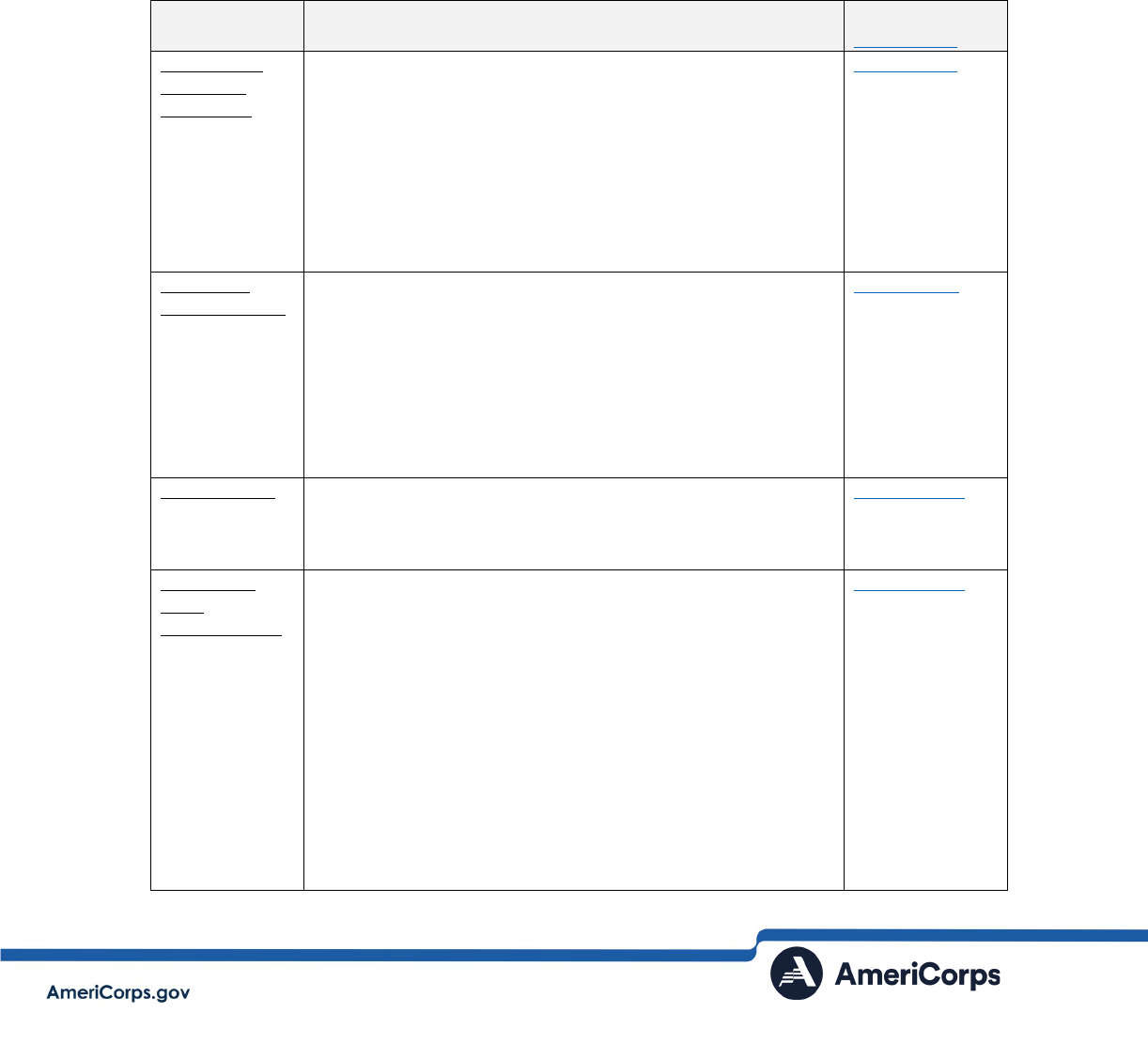
6
Each organization is assigned or derived to a single cognizant agency which acts on behalf
of all federal agencies by reviewing and accepting indirect cost rates. Once established, a
cognizant agency will typically remain cognizant for up to a period of 5 years unless
circumstances change, such as a shift in the source of the majority of direct funding in
which case the designation of the cognizant agency could potentially be reevaluated.
Indirect cost rates approved by cognizant agencies are acceptable by all Federal agencies,
unless otherwise stipulated by Federal statute, or regulation, or agency head or delegate,
in accordance with 2 C.F.R. § 200.414(c)(1). OMB is responsible for assigning federal
agencies to serve as cognizant agencies to review and accept indirect cost rates for
organizations receiving financial awards. OMB’s Office of Federal Financial Management
has been tasked with this responsibility. The chart below helps organizations determine
who their cognizant agency for indirect costs is.
Entity Type Cognizant Agency for Indirect Costs
Reference
2 CFR 200
Institutions
of Higher
Education
(IHEs)
Cost negotiation cognizance is assigned to the Department
of Health and Human Services (HHS) or the Department of
Defense's Office of Naval Research (DOD), normally
depending on which of the two agencies (HHS or DOD)
provides more funds directly to the educational institution
for the most recent three years. In cases where neither HHS
nor DOD provides Federal funding directly to an
educational institution, the cognizant agency for indirect
costs assignment must default to HHS.
Appendix III
Paragraph C.11
Nonprofit
organizations
Unless different arrangements are agreed to by the Federal
agencies concerned, the Federal agency with the largest
dollar value of Federal awards directly funded to an
organization will be designated as the cognizant agency for
indirect costs for the negotiation and approval of the
indirect cost rates. Non-profit organizations must develop
and submit a new indirect cost proposal to AmeriCorps no
later than six months prior to the expiration of their current
rate.
Appendix IV
Paragraph C.2.a
Indian tribes Each Indian tribal government desiring reimbursement of
indirect costs must submit its indirect cost proposal to the
Department of the Interior (its cognizant agency for indirect
costs).
Appendix VII
Paragraph. D.1.c
States and
local
governments
The cognizant agency responsible for review and approval
is the Federal agency with the largest dollar value of total
Federal awards with a governmental unit. All departments
or agencies of the governmental unit desiring to claim
indirect costs under Federal awards must prepare an
indirect cost rate proposal and related documentation to
support those costs and retain the documentation for audit.
Departments or agencies receiving less than $35 million
are not required to submit an Indirect Cost Rate Proposal to
its cognizant agency unless required by the cognizant
agency. However, a governmental department or agency
unit that receives more than $35 million in direct Federal
funding must submit its indirect cost rate proposal to its
cognizant agency for indirect costs.
Appendix VII
Paragraph D.1
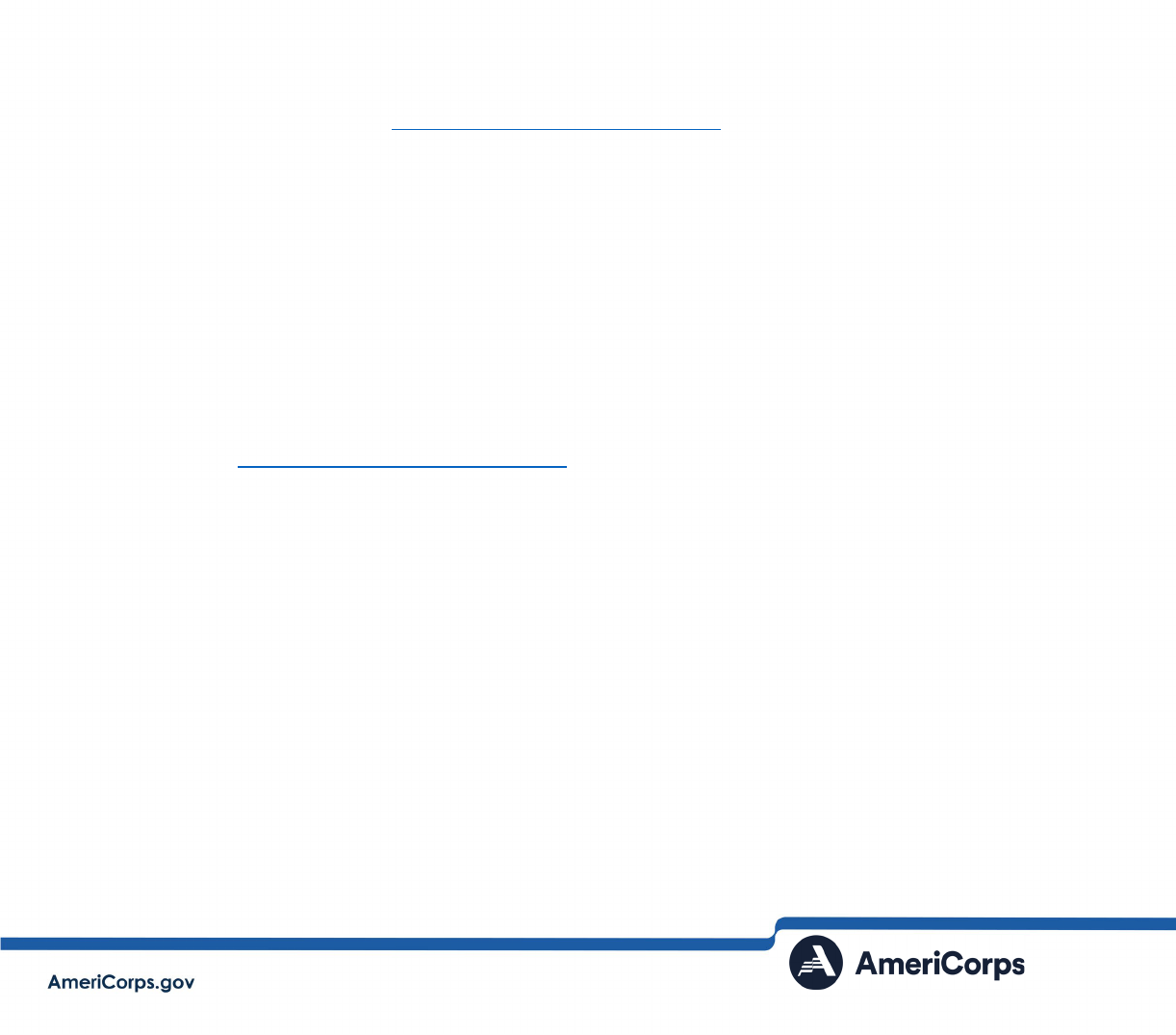
7
6.0
Steps to Submit Indirect Cost Rate Proposal to AmeriCorps
The Indirect Cost Rate Proposal (ICRP) consists of the documentation prepared by an
organization to substantiate its request for the establishment of an indirect cost rate, as
described in Appendixes to Part 200 of the Uniform Administrative Requirements, Cost
Principles, and Audit Requirements for Federal Awards (Appendix IV to 2 C.F.R. Part 200—
Indirect (F&A) Costs Identification and Assignment, and Rate Determination for Nonprofit
Organizations through Appendix VII to Part 200—States and Local Government and Indian
Tribe Indirect Cost Proposals).
The ICRP package normally includes the proposal, related audited financial statements,
and other detailed supporting documents (e.g., general ledger, trial balance, etc.) For
organizations seeking a negotiated rate from AmeriCorps, submission requirements vary
depending on the type of rate an organization chooses to negotiate. Negotiated indirect
cost rates approved by AmeriCorps are normally valid for one year.
ICRPs must be submitted no later than six months prior to the current rate’s expiration date
when request a new rate. Your organization can seek prior approval from AmeriCorps, by
submitting a request to [email protected], to use the rate proposed in
your ICRP as your provisional rate until AmeriCorps has notified you of the accepted rate.
Note that AmeriCorps will review all ICRPs against the provisions codified in 2 CFR 200
Subpart E.
An indirect cost proposal checklist has been provided via attachments 1, 2, and 3 to assist
organizations interested in pursuing an indirect rate. Further, the key procedures for
pursuing a federally negotiated indirect rate when AmeriCorps is the designated
cognizant agency have been outlined below.
1. Grantees prepare and submit an indirect cost rate proposal to AmeriCorps via the
indirect cost rate mailbox maintained by OADR
2. Propos
als must be prepared in accordance with 2 CFR Part 200.414.
3. OADR v
erifies that AmeriCorps is the cognizant agency for indirect costs for the
applicant and reviews the indirect cost proposal for completeness.
4. OADR
initiates negotiation process through its partnering Federal agency, the
Department of Veterans Affairs, Office of Budget Oversight (VA/OBO), to verify the
proposed rate.
5. VA/OBO completes the ICRP final review within the established timelines. VA/OBO
typically completes final validation of ICRPs within three months of receipt of the
ICRP package.
6. Upon V
A/OBO’s validation of the rate, OADR submits a draft of the NICRA to the
applicant for their review.
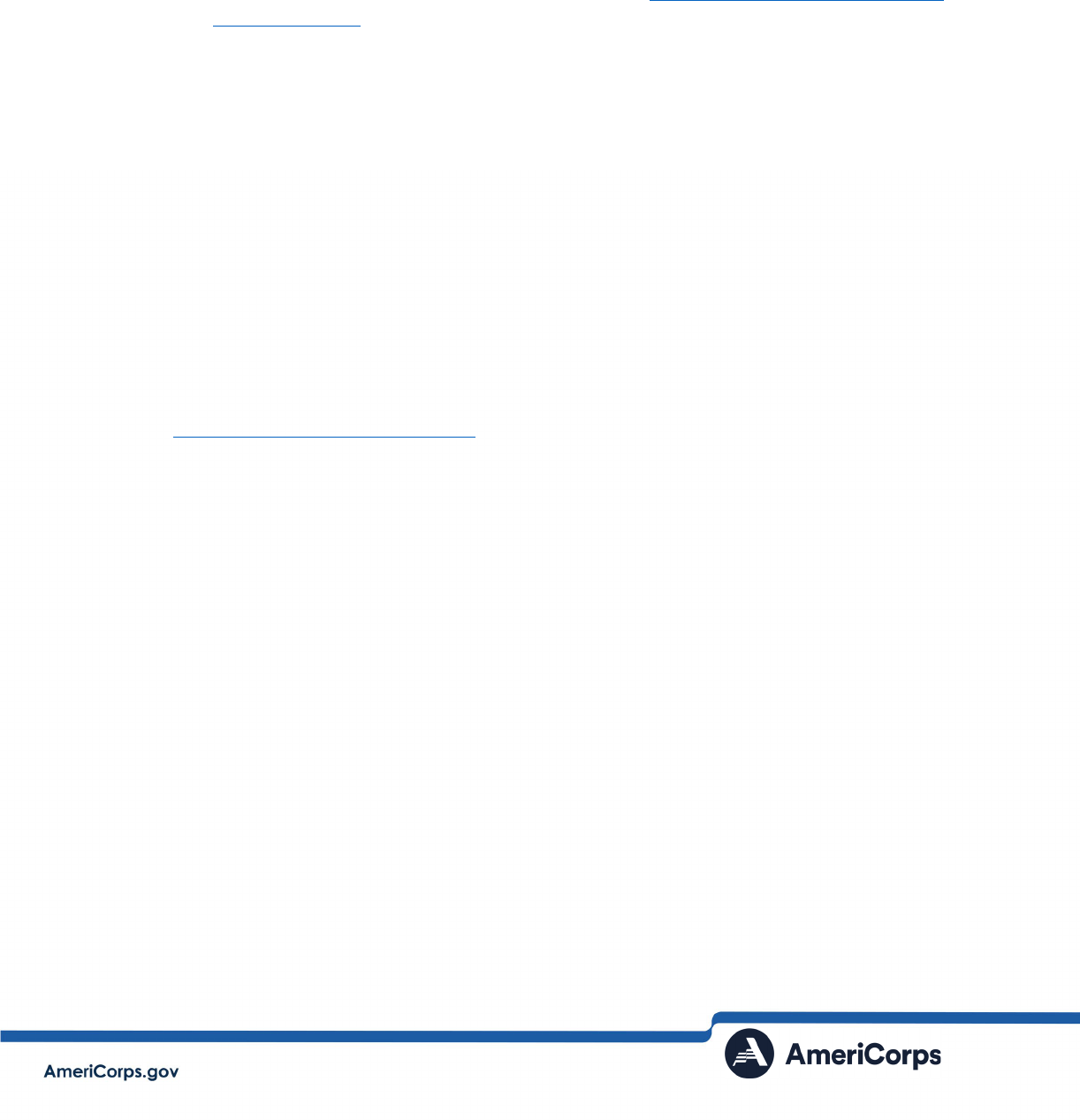
8
7. Follow
ing the applicant’s review of the NICRA, OADR formally issues the NICRA.
8. The
applicant inputs their indirect cost rate information into the AmeriCorps online
grants management system and performs any necessary adjustments based on the
rate agreement issued by VA/OBO. For instructions on how to enter indirect cost
rate information into an eGrants account, refer to eGrants Indirect Cost Rate (IDCR)
User Instructions.
9. Ap
plicants are required to perform all necessary adjustments to their internal
accounting records, FFRs, and other financial reports, including repaying any
indirect costs billed to the award that exceeded the final rate agreement issued by
AmeriCorps’ Office of Audit and Debt Resolution.
7.0
Requesting a Federally Negotiated Indirect Cost Rate Extension
Organizations that have a current federally negotiated cost rate may apply for a one-
time extension of that rate agreement for a period of up to four years. Extension
requests are subject to the review and approval of the cognizant agency for indirect
costs. If the extension is granted the organization may not request a rate review until the
extension period ends. At the end of the extension period, the organization must re-
apply to negotiate a rate. If AmeriCorps is your cognizant agency for indirect cost
negotiation, and you would like to request an extension, your organization should
prepare an extension request, per the requirements below, and submit your request to
[email protected]. See steps under Section 6.0 on how to submit your
indirect cost rate proposal. If AmeriCorps is not your cognizant agency for indirect cost
negotiation, and you would like to request an extension, you should contact your Grants
Officer at your cognizant agency for more information.
Extension Request Requirements
AmeriCorps will consider extension requests from organizations that have held an
indirect cost rate through AmeriCorps for at least three years. AmeriCorps can only
consider extensions of final or predetermined rates (not provisional or fixed). The
extension request must include the following:
1. A written request on organizational letterhead for an extension of the current
indirect cost rate agreement. The written request must indicate the rate and
fiscal periods requested in the extension (1-4 years). It must be signed by the
authorized representative for your organization.
2. A copy of the indirect cost rate agreement for which your organization is seeking
an extension. The rate agreement must be current (i.e., not expired).
Criteria for Evaluation for Extension Requests
Each extension request will be assessed based on consistency of the rate over the
last three years, timeliness of previous submissions, delinquent debts, and fiscal
findings identified through compliance monitoring, single audits, and OIG audits.

9
8.0
ICRP Submission, Review and Approval Process Summary
AMERICORPS (OADR)Applicant/Grantee VA/OBO
Phase
Ready to
Negotiate or
Extend Indirect
Cost Rate?
See Section 3.0.
(Options for
Calculating
Indirect Costs)
No
Yes
Is AmeriCorps
the Cognizant
Agency for
Indirect Costs?
Grantee submits ICRP to OADR
IndirectCostRate@americorps.gov
See section 7.0
for guidance.
No
Yes
No
OADR follows-up
with applicant as
necessary
Yes
OADR Shares ICRP
package to VA/OBO
GPDICRP@va.gov for
validation
OADR provides applicant
with box.com link for any
additional/future
documentation uploads
Is the ICRP
Package
Complete and
Accurate?
VA/OBO
Initiates
Validation
GPDICRP@va.gov
Follows-up directly
with applicant for
any additional
information
GPDICRP@va.gov
confirms final
validation within
60-90 days with
OADR
OADR shares draft
NICRA to applicant
for review/
signature
Applicant returns signed
copy to OADR
OADR issues final
approved NICRA
Applicant files NICRA for
documentation
Indirect Cost Rate Proposal (ICRP) Submission, Review, and Approval Process Flowchart
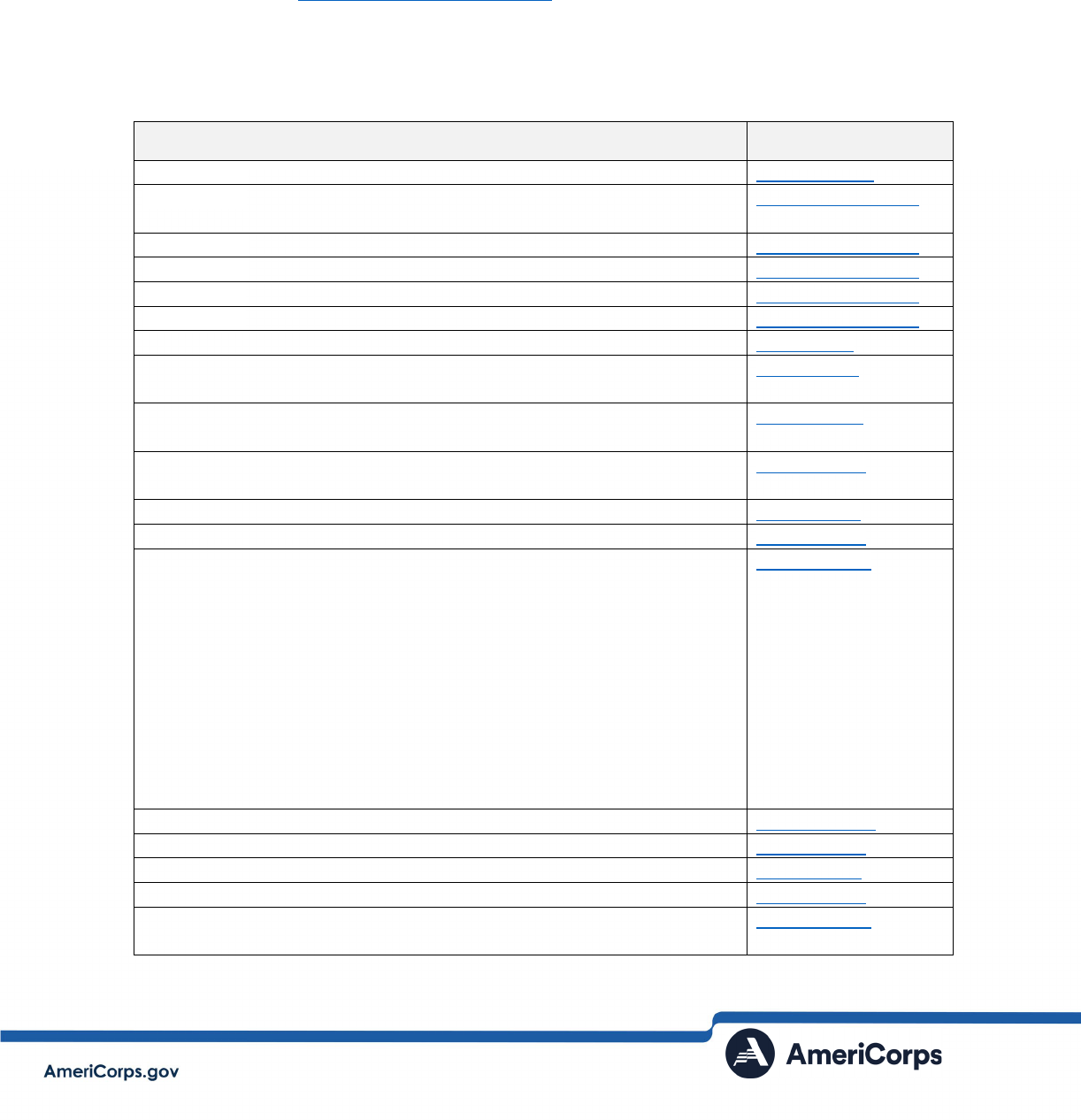
10
9.0
Key References to Trainings and Resources:
Best Practices in Budget Development Training:
For each competition, AmeriCorps provides an overview of the function of AmeriCorps
budget, the budget management process, and the keys for submitting a compliant and
competitive AmeriCorps budget and budget narrative. Refer to Information Session
section of the Funding Opportunities Page under each respective funding opportunity
for relevant recorded trainings. These trainings also include other relevant topics
including sample budget narratives for cost reimbursement grant budget narrative and
planning grant budget narratives.
References to 2 CFR 200 (Uniform Guidance)
Title Part | Section
Subpart A - Acronyms and Definitions 200.0 – 200.1
Subpart B - Pre-Federal Award Requirements and Contents of
Federal Awards
200.100 – 200.113
Subpart C - Post Federal Award Requirements 200.200 – 200.216
Subpart D - Post Federal Award Requirements 200.300 – 200.346
Subpart E - Cost Principles 200.400 – 200.476
Subpart F - Audit Requirements 200.500 – 200.521
Full Text of Notice of Funding Opportunity Appendix I
Contract Provisions for Non-Fed
eral Entity Contracts Under
Federal Awards
Appendix II
Indirect (F&A) Costs Identification and Assignment, and Rate
De
termination for Institutions of Higher Education (IHEs)
Appendix III
Indirect (F&A) Costs Identification and Assignment, and Rate
Determination for Nonprofit Organizations
Appendix IV
State/Local Governmentwide Central Service Cost Allocation Plans Appendix V
Public Assistance Cost Allocation Plans Appendix VI
States and Local Government and Indian Tribe Indirect Cost
Prop
osals
Note* A
cost allocation plan explains which costs are determined
to be direct or indirect. Rather than being an indirect cost rate
itself, it explains why the entity classifies specific costs as direct or
indirect. The cost allocation plan also addresses direct costs that
may be shared among different programs. AmeriCorps does not
accept cost allocation plans from non-governmental entities as an
acceptable method for charging indirect costs unless such
alternative methodology has been approved in writing by the
cognizant agency for indirect costs.
Appendix VII
Nonprofit Organizations Exempted From Subpart E of Part 200 Append
ix VIII
Hospital Cost Principles Appendix IX
Data Collection Form (Form SF–SAC) Appendix X
Compliance Supplement Appendix XI
Award Term and Condition for Recipient Integrity and
Performance Matters
Appendix XII
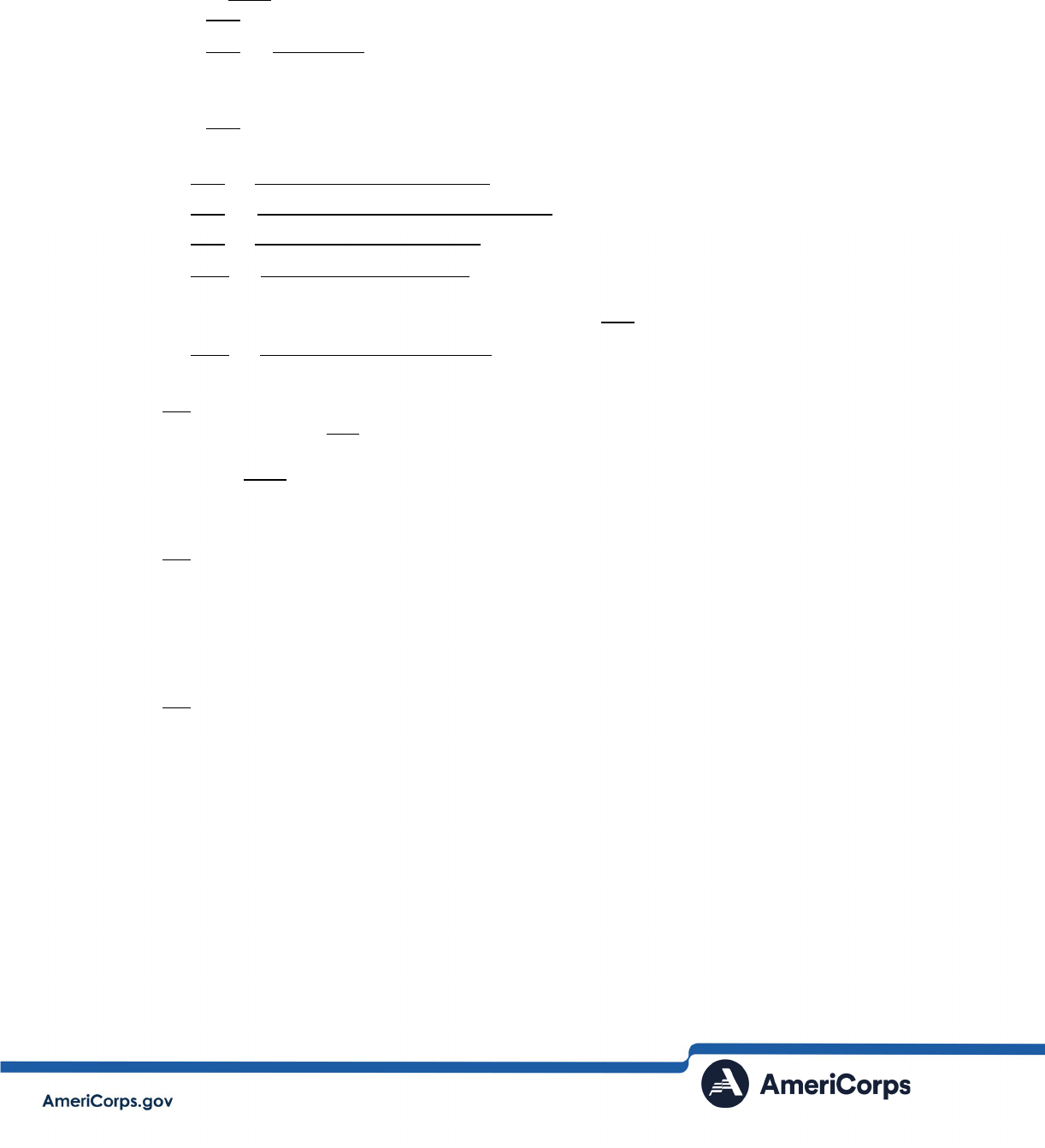
11
Attachment 1. Indirect Cost Proposal Checklist for Non-profit and
Commercial Organizations
a.
Submit once unless changes are observed:
1a. Organizational chart,
1b. Nonprofits - Narrative explaining compliance with 2 CFR
§200.430(a)(1)(2) & (3) and the standards for documentation of
personnel expenses.
1c. Signed Cost Policy Statement.
b.
An indirect cost rate proposal(s) providing the following:
2a. Personnel Costs Worksheet, including fringe benefits breakdown.
2b. Allocation of Personnel Worksheet, providing indirect/direct time charges.
2c. Fringe Benefits Worksheet,
2d. Statement of Total Costs, supporting the indirect and direct costs
incurred by expense category, identified by Federal agency, specific
government grant, contract, and other non-government activities.
2e. Statement of Indirect Costs, including indirect cost pool(s), allocation
base(s), and indirect cost rate(s) proposed.
c.
Audited financial statements, if available. If audited financial statements are not
available, IRS Form 990 (non-profits) or compilation/review financial statements (for-
profits) for the final rate proposal. Approved budget for provisional proposal, if
needed. Note: The Statement of Total Costs (2d. above) must reconcile to Financial
Statements. If not, please provide a reconciliation statement.
d.
Certification that the indirect cost rate proposal was prepared in a manner
consistent with the applicable cost principles set forth in 2 CFR Part 200, Subpart E &
Appendix IV for non-profits, or the Federal Acquisition Regulation (Part 31) for
commercial organizations. The certifications should be signed by the
President/Executive Director, or Comptroller/ CFO.
e.
A listing of grants and contracts by Federal agency, subagency, program office
funding source, award amount, period of performance, and the indirect cost
(overhead) limitations (if any) applicable to each, such as, ceiling rates or amounts
restricted by administrative or statutory regulations, applicable to the period(s) of the
proposal(s). This listing must be supported with copies of the approved federal grants
or contracts notification awards (1
st
page).

12
Attachment 2. Indirect Cost Rate Proposal Checklist for State Workforce
Agencies
1. Submit once unless changes are observed:
____1a. Organizational chart,
____1b. Employee time sheet sample, providing for distribution of hours to
direct/indirect functions. Narrative explaining compliance with 2 CFR
§200.430(a)(1)(2) & (3) and the standards for documentation of personnel expenses.
____1c. Cost Policy Statement signed by a duly authorized official.
2.
An indirect cost rate proposal providing the following schedules:
____2a. Personnel Costs Worksheet, including fringe benefits breakdown. Agencies
may aggregate salary expense by department such as accounting, human
reso
urces, office of director, etc.
____2b. Allocation of Personnel Worksheet, providing indirect/direct time charges.
____2c. Fringe Benef
its Worksheet if fringes are not directly and indirectly identified.
____2d. Statement of Total Costs, segregated between the indirect and direct costs
incurred by line item of expense (salaries, fringes, rent, etc.), identified by Federal
agency, specific government grant, contract, and other non-Federal activities.
Note that the allocation base and the amount of indirect costs allocated to each
funding source should be identified.
____2e. Statement of Indirect Costs, including indirect line item of expenses,
allocation base, and indirect cost rate proposed.
3. ___
_ Financial statements (audited if available) for the applicable fiscal year. Note: The
Statement of Total Costs (2d. above) must reconcile to Financial Statements. If not, please
prov
ide a reconciliation statement.
4.
____A listing of grants and contracts by Federal agency, subagency, program office funding
source, total dollar amount, period of performance, and the indirect cost limitations (if any)
applicable to each, such as amounts restricted by administrative or statutory regulations,
applicable to the period(s) of the proposal(s). This listing should also be supported by the
approved Federal grant or contract notification award(s).
5. ___
_
A schedule listing any funding sources excluded from indirect cost allocation base and
the reason for the exclusion.
6. ___
_Copy of HHS approved SWCAP, if SWCAP costs are allocated to federal programs.
7.
___
_
Review letter of State Department of Finance approval of grantee’s ICRP submission
documents.
8._
___Signed and dated Certificate of Indirect Costs.

13
Attachment 3. Sample: Cost Policy Statement
1. General Accounting Policies
o Basis of Accounting — (A
ccrual, Cash or Modified Cash)
Fiscal Period — (Insert your 12-month fiscal year)
Allocation Basis — (Specify Simplified or Direct Allocation Basis)
Indirect Cost Rate Allocation Base — (Describe allocation base)
(Name of Agency) maintains adequate internal controls to ensure that no cost is charged
both directly and indirectly to Federal contracts or grants.
(Describe any other accounting policies utilized)
o
o
o
o
o
2. De
scription of Cost Allocation Methodology
o Salaries and Wages
1. Direct Costs — (General statement describing the criteria in which employees direct
charge their time, such as "The majority of the employees direct charge their salary
costs since their work is specifically identifiable to specific grants, contracts, or other
activities of the organization. The charges are supported by auditable labor
distribution reports which reflect the actual activities of employees".)
2. Indirect Costs — The following staff members charge 100% of their salary costs
indirectly.
List Appropriate Positions
3. Mixed Charges — The following employees may charge their salary costs to both
direct and indirect activities.
List Appropriate Positions
The distinction between direct and indirect is primarily based on functions
performed. For example, when the positions shown are performing functions that
are necessary and beneficial to all programs, they are indirect. When functions are
specific to one or more programs, they are direct because they do not benefit all
programs.
Auditable labor distribution records which reflect the actual activities of employees
are maintained to support the mix of direct/indirect charges.
4. Describe how release time (vacation, sick leave, holiday pay, etc.) is treated. Include
information on whether vacation time is accrued and charged to programs when
earned or charged when taken; whether allocated the same as the related salary cost
or some other methodology; and whether treated as a fringe benefit or same as
normal salary charges.
o Fringe Benefits. Describe all fringe benefits and whether a fringe benefit is tracked by the
agency's accounting system or whether a fringe benefit rate needs to be established:
Travel
O
ccupancy Expenses
Supplies and Materials
Communications
Photocopying and Printing
Outside Services
Depreciation and Use Allowances
Repairs and Maintenance
Charges allocated down from the State such as SWCAP costs.
Capital Items
Legal Fees
Audit Fees
Signature _________________________________ Date_______________________________
